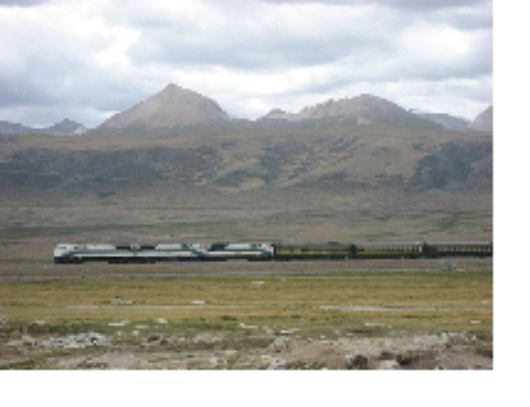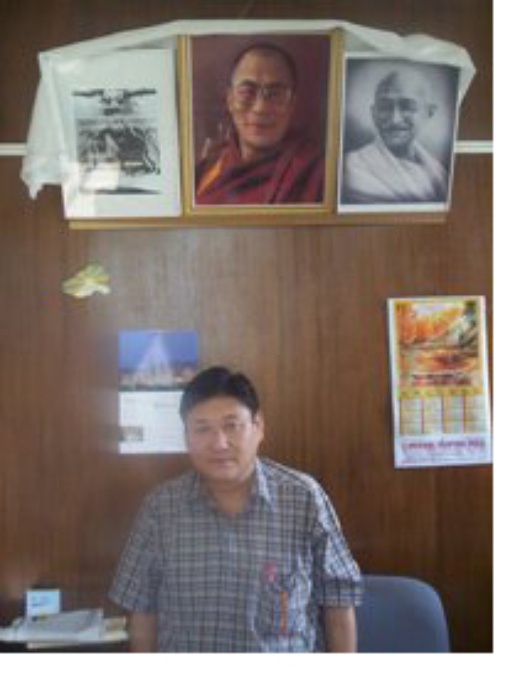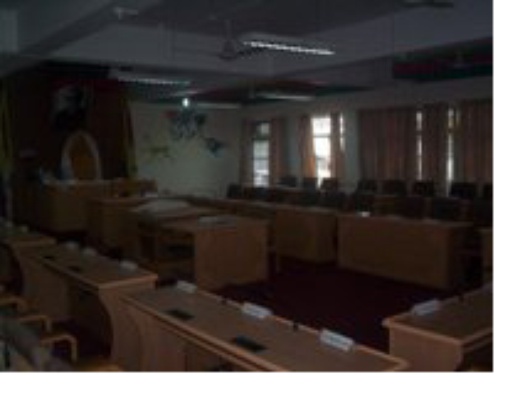
Railway to the roof of the world
Published on
Translation by:
Nabeelah ShabbirThe world’s highest railway was opened between Peking and Lhasa, the Tibetan capital, in July. It has not only opened the door to modernity, but has aroused new clashes between the Chinese government and the Tibetans
Tibet has returned to the news screens since Lhasa, the Tibetan capital, premiered the first direct rail connection with Peking in June. Sonam Norbu Dagpo, the Secretary for International Relations in the Tibetan government-in-exile, talked to us from the Indian city of Dharamsala, where the Dalai Lama and his government have based themselves since 1959.
 Since the opening of the 710-mile-long railway ‘Lhasa-Pekin’, your government has stated that: ‘the railway line itself is not a cause of concern for the Tibetan people; how it will be used is the main concern.' What do the Tibetans fear?
Since the opening of the 710-mile-long railway ‘Lhasa-Pekin’, your government has stated that: ‘the railway line itself is not a cause of concern for the Tibetan people; how it will be used is the main concern.' What do the Tibetans fear?
The infrastructures that China develop in Tibet don't provide the source of danger in themselves; it’s all to do with how they are used. They are utilised to transfer more Chinese soldiers and arms across to Tibet. If this happens, the Tibetans will very soon become a minority in their own country. Of course the new train will contribute to Tibet’s additional resources. But it goes directly to the pocket of the Chinese. They will enjoy better employment opportunities, for example by taking administrative positions and becoming company owners.
Your government is troubled by China’s pillaging of Tibet’s natural resources. Do you know of any European company which is involved in this in Tibet?
At the moment we don’t have information available about which exact European companies are operating here in Tibet. We worry about the Tibetan ecology, because in this country the natural balance is very fragile. In 1998, a series of devastating floods struck China. It was then that Peking realised that this was due to massive deforestation in the adjacent Tibetan Plateau.
 The EU and the rest of the European countries support the 'one China’ policy. But at the same time, they support the Tibetan government-in-exile. Can these positions co-exist side by side?
The EU and the rest of the European countries support the 'one China’ policy. But at the same time, they support the Tibetan government-in-exile. Can these positions co-exist side by side?
They can indeed. Tibet does not pursue independence, but wants to improve its autonomy. We want to maintain our freedom, our language, our culture, our natural environment and our way of life within China. Since we do not want to regain our sovereignty, there are no contradictions between both stances.
In 2000, the UN supported the Millenium Peace Summit, in which more than 100 religious world leaders participated. But conspicuously, the world-respected Dalai Lama was absent. Does the UN still have a card to play in the Tibet question?
It wasn’t the UN who vetoed the presence of the Dalai Lama in the event, but China. It’s just another example of the UN initiatives which have been blocked by China. The United Nations tried to publish a book about peace and anti-violence, which was to include an article by the Dalai lama, but China’s energetic protests ensured that the work never surfaced.
If the UN’s decision-making procedure could be more democratic, could they then still play a legitimate card in tackling the Tibet issue?
The EU could play a much more constructuive role in the UN. Since China became a permanent member, not one human rights resolution in Tibet has been accepted. It’s an ironic situation, because China is a member of the Commission on Human Rights.
The Panchen Lama, the second highest ranking figure after in Buddhist Tibet, is traditionally responsible for finding the reincarnation of the Dalai Lama. However, the government of the People's Republic of China picked his successor themselves, robbing the Dalai Lama of the choice. Is this discussed openly in Peking?
No. A few days after His Holiness announced the reincarnation of the former Panchen Lama, he disappeared, and became the youngest political prisoner in the world. (The reincarnation candidates are always children). When the EU and other governments confronted Peking about this abduction, they were told that he was happy where he was and did not wish to be bothered. In the place of the real Pachen Lama, the Chinese nominated another, thereby obliging the Tibetans to worship him.
 His Holiness the Dalai Lama is the face and the symbol of Tibet’s subjugation under China. He is respected by governments and religious leaders of all ideologies and faiths worldwide. What happens once he has gone?
His Holiness the Dalai Lama is the face and the symbol of Tibet’s subjugation under China. He is respected by governments and religious leaders of all ideologies and faiths worldwide. What happens once he has gone?
When the Tibetan government came to India, it was archaic and primitive. It was overly dependant on the previous Dalai Lamas. During the last 45 years, a lot of hard work has been put in, so that the government became a modern institution, as responsible and democratic as it is today. You can say that since 1959, the Dalai Lama prepared the Tibetans in life without granting more autonomy to political Tibetans.
Photos: Tibetian train (owltoucan/ Flickr); Sonam Norbu Dagpo (JDR); The parliament of Tibet-in-exile (JDR)
Translated from Sonam Norbu: la UE podría jugar un papel más constructivo que la ONU en el Tíbet



